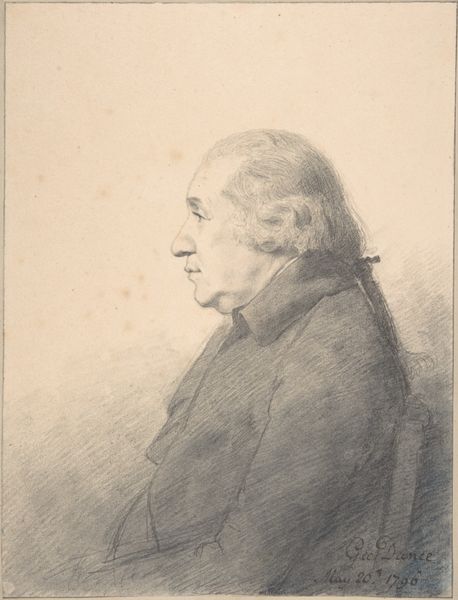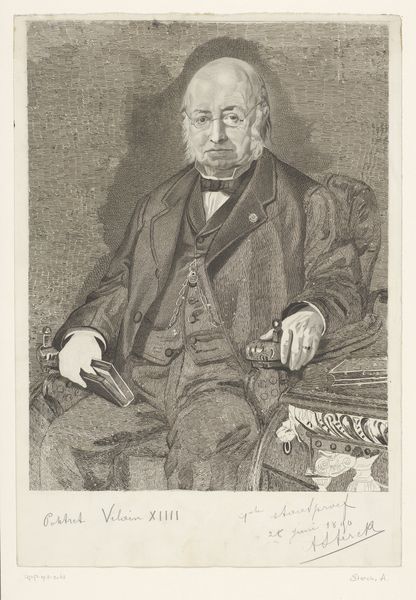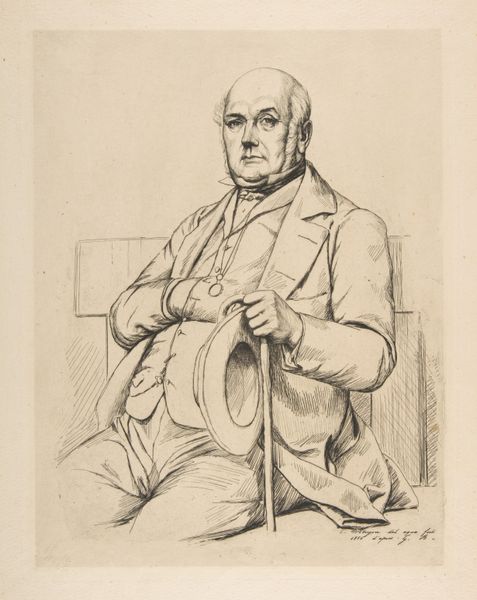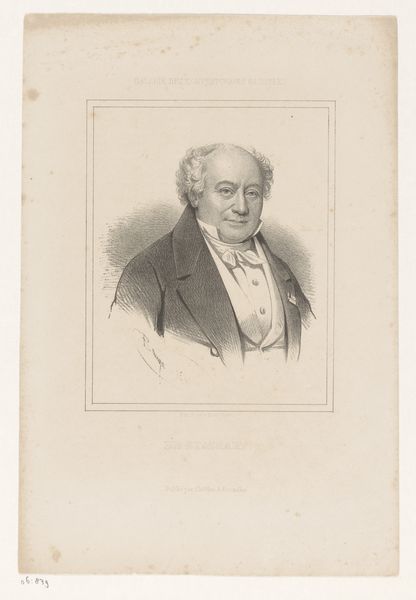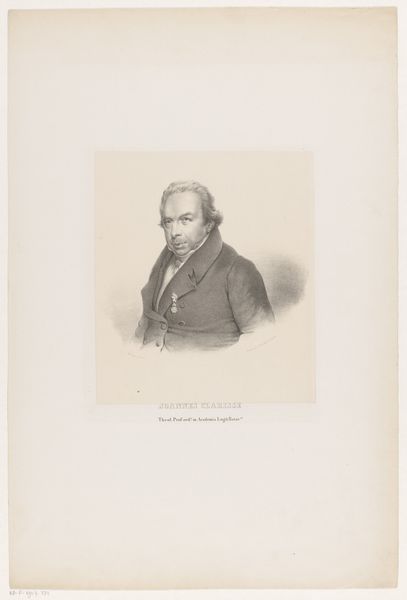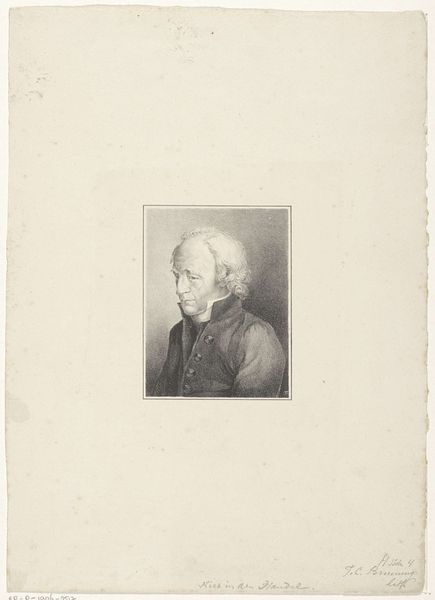
drawing, print, etching, engraving
#
portrait
#
drawing
# print
#
etching
#
men
#
history-painting
#
engraving
#
realism
Dimensions: Sheet: 11 3/4 × 9 1/8 in. (29.9 × 23.1 cm) Plate: 9 × 7 5/16 in. (22.8 × 18.6 cm)
Copyright: Public Domain
Editor: This is Louis Lucas's "Portrait of Francisco Goya, from "The Portfolio,"' created in 1879, using etching and engraving. It's a very compelling portrait; the contrast and texture create such a tangible presence, a real feeling of the weight of a personality. What stands out to you in this work? Curator: It is quite interesting how the artist manipulates tonal values to achieve depth. Observe the density of line work in the background dissolving into the contours of the figure and notice how that density gradually eases to give way to the lightest tones highlighting Goya's face and hands. How do these shifts in texture alter your reading of the portrait? Editor: They certainly give the figure dimension. It's like he emerges from the darkness, illuminated with all that meticulous hatching. But it's not just about realism, is it? There's a specific way the light catches his expression… Curator: Precisely. Consider also the pose. It is very calculated in terms of the shapes it casts within the pictorial space: the angle of his arms holding the palette, the arrangement of fabric around his collar and torso... everything contributes to a formal visual statement about this man, Goya. One might even say, the artist's posture within the scene becomes a metaphor for *artistic expression* itself. Would you agree with this observation? Editor: I think that’s a great observation; Goya, palette in hand, not simply present, but presented *as* the act of creating. I hadn't thought of it that way. Curator: The etching marks act not just as mimetic tools but, through their density, create emotional affect; they provide structure but simultaneously project something almost… theatrical? What do you think about the semiotic charge in relation to historical understanding? Editor: Yes, almost a romantic view of the artistic persona, or maybe even a premonition of the avant-garde aesthetic in that rough almost unfinished-quality of the darker tones. Curator: An interesting analysis. By carefully attending to compositional organization, technique, and semiotic features, we can arrive at multiple interpretative possibilities which reflect historical context while shedding new light on a singular visual experience. Editor: Exactly. I see that now. It really deepens my appreciation of how much thought is actually conveyed just through the formal properties of a work like this.
Comments
No comments
Be the first to comment and join the conversation on the ultimate creative platform.




